
How to Use SMC01 stepper driver: Examples, Pinouts, and Specs
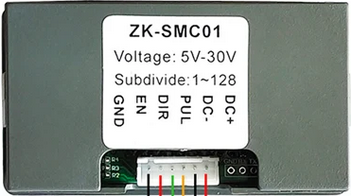
 Design with SMC01 stepper driver in Cirkit Designer
Design with SMC01 stepper driver in Cirkit DesignerIntroduction
The SMC01 Stepper Driver is a device used to control the motion of stepper motors by sending precise electrical pulses to the motor windings. This allows for accurate positioning and speed control, making it an essential component in various applications such as CNC machines, 3D printers, robotics, and automated manufacturing systems.
Explore Projects Built with SMC01 stepper driver
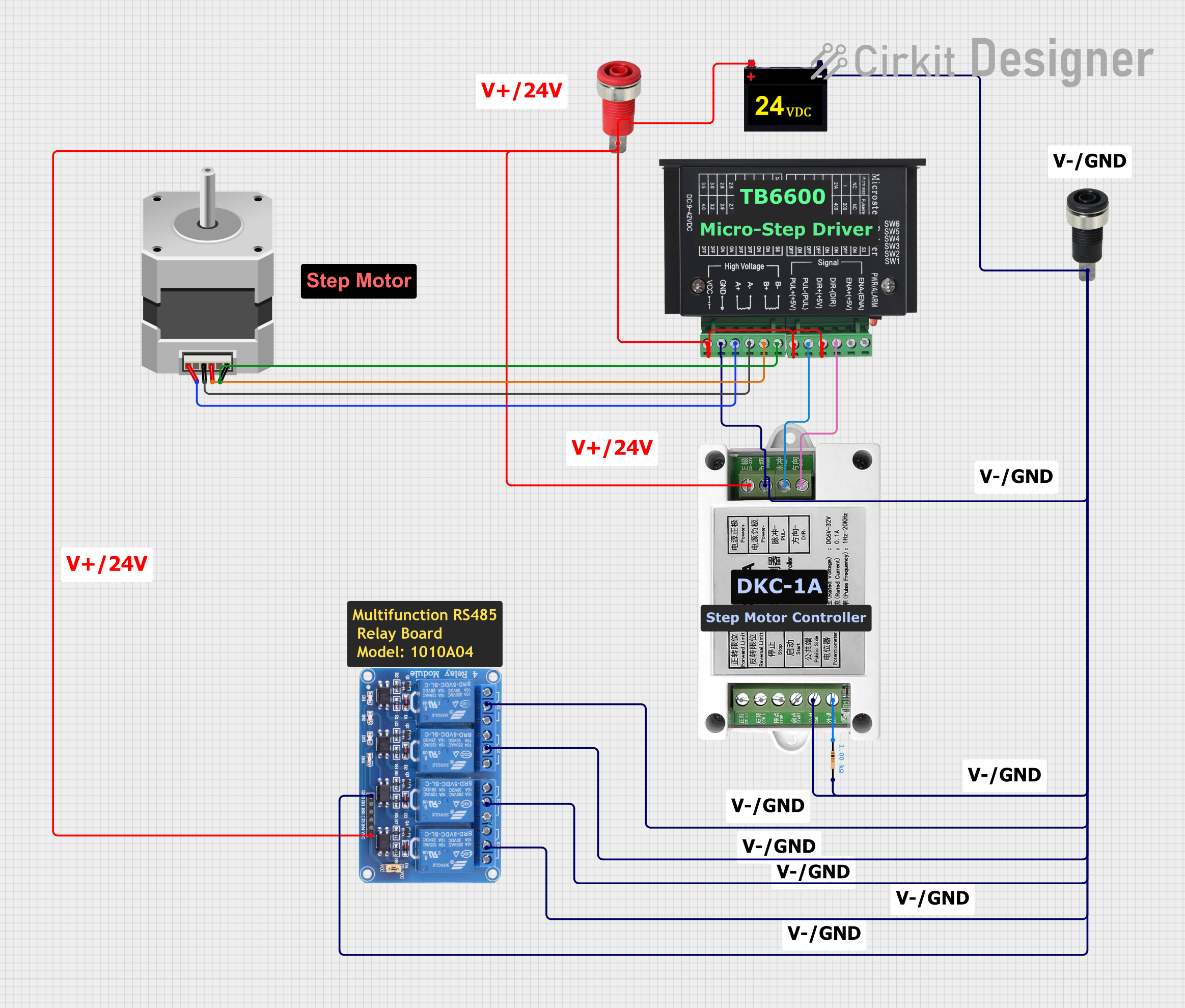
 Open Project in Cirkit Designer
Open Project in Cirkit Designer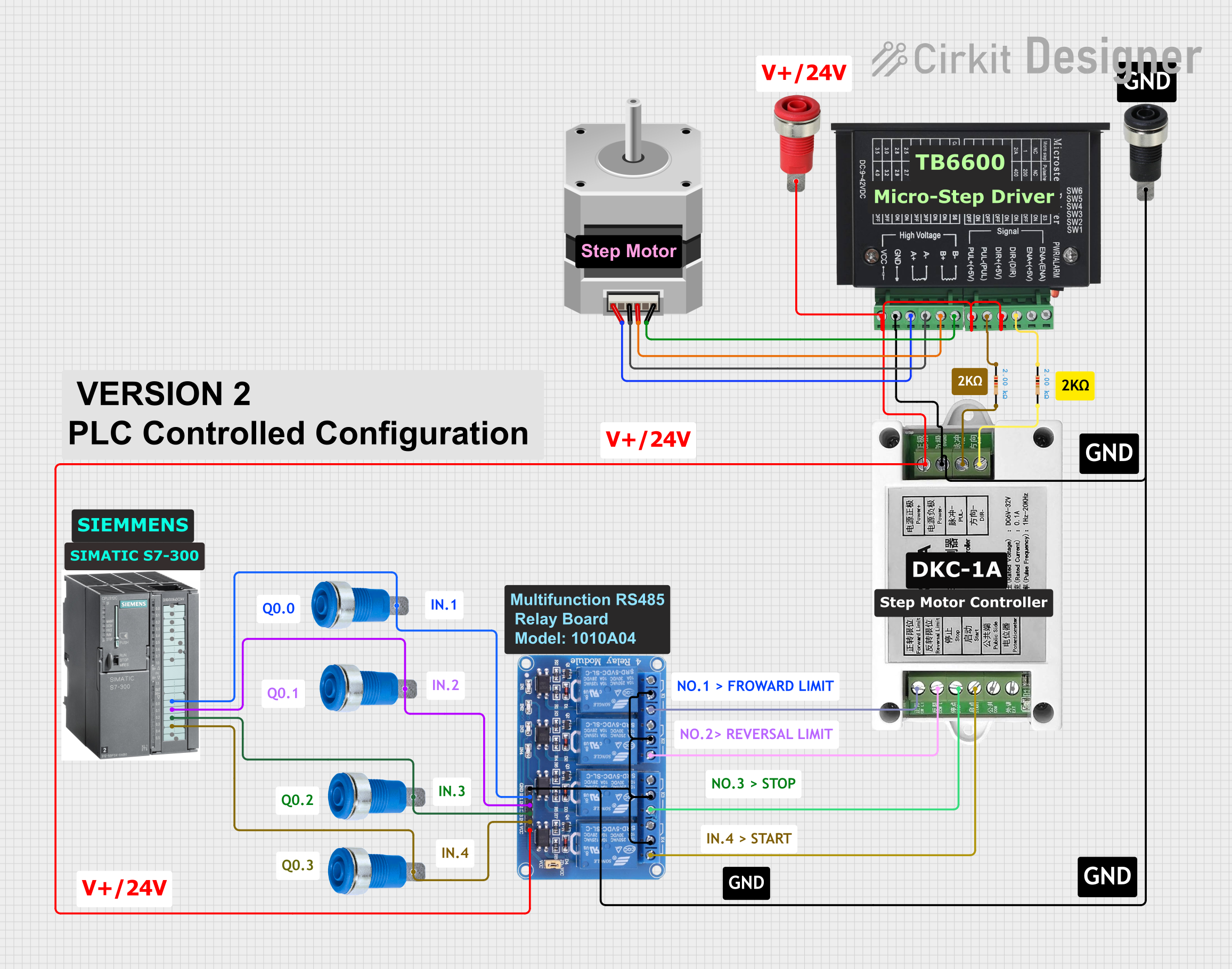
 Open Project in Cirkit Designer
Open Project in Cirkit Designer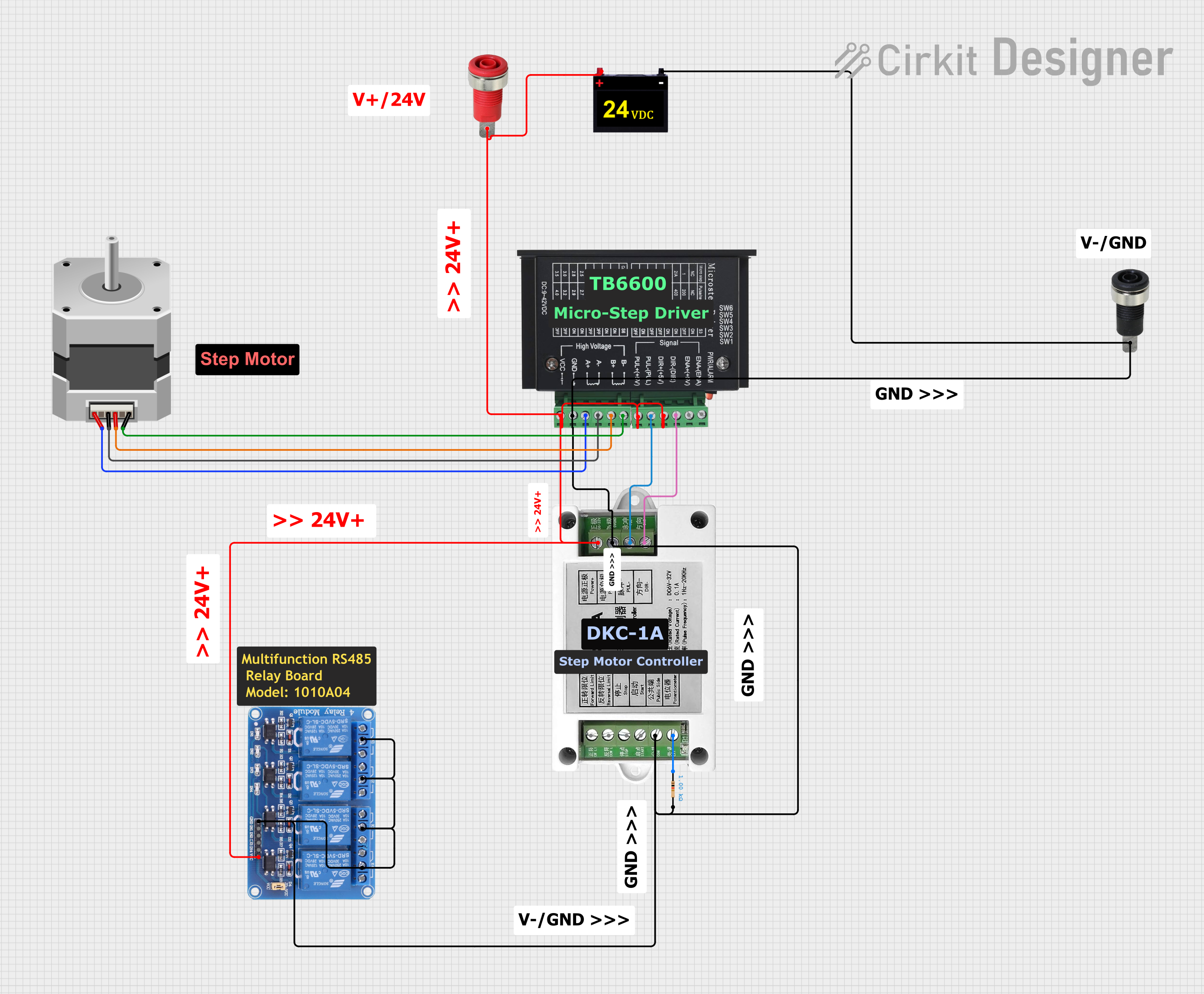
 Open Project in Cirkit Designer
Open Project in Cirkit Designer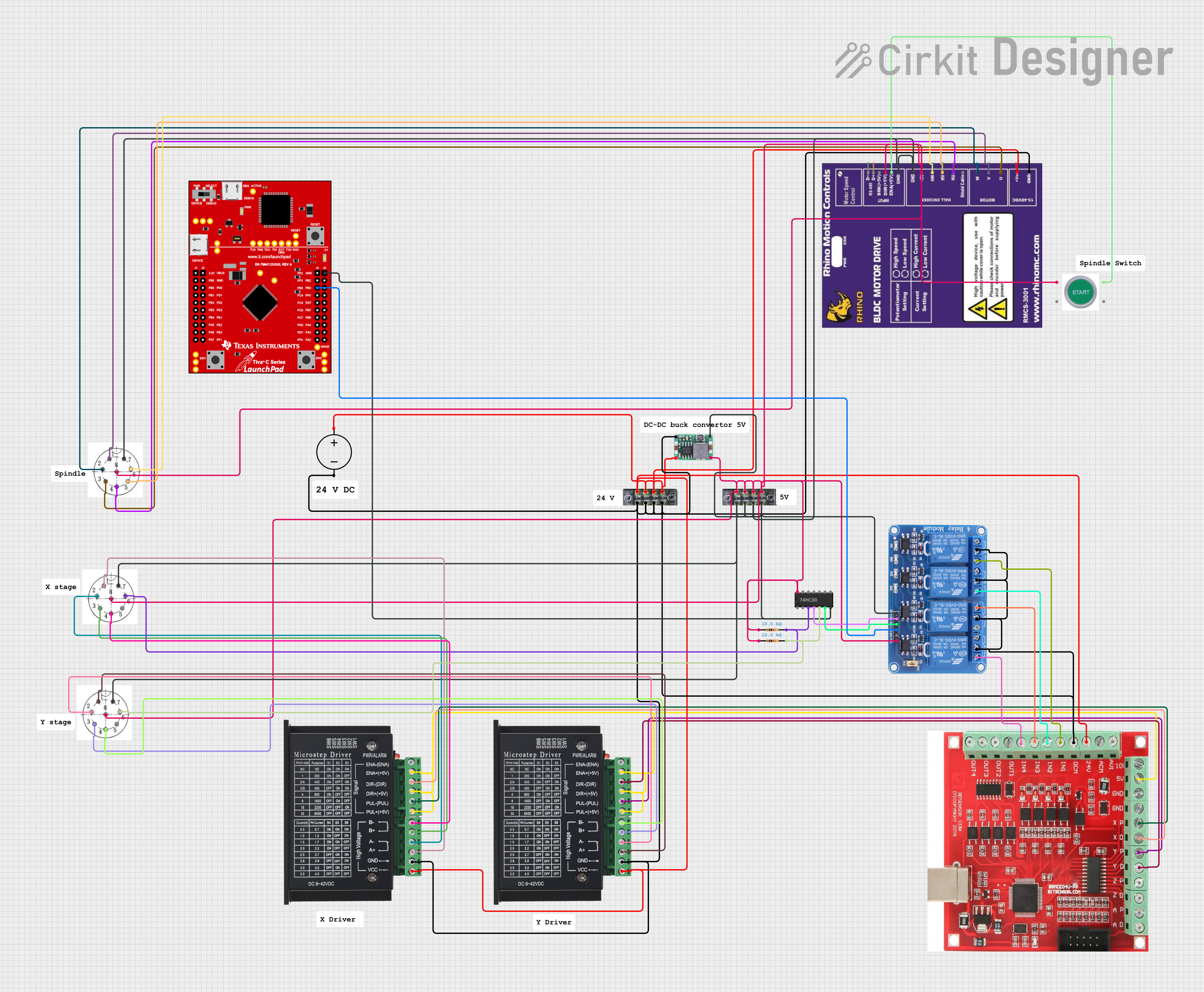
 Open Project in Cirkit Designer
Open Project in Cirkit DesignerExplore Projects Built with SMC01 stepper driver

 Open Project in Cirkit Designer
Open Project in Cirkit Designer
 Open Project in Cirkit Designer
Open Project in Cirkit Designer
 Open Project in Cirkit Designer
Open Project in Cirkit Designer
 Open Project in Cirkit Designer
Open Project in Cirkit DesignerTechnical Specifications
Key Technical Details
| Parameter | Value |
|---|---|
| Supply Voltage | 8V - 35V |
| Output Current | 1.5A (max) |
| Microstepping | Full, Half, 1/4, 1/8, 1/16 |
| Control Interface | Step and Direction |
| Logic Voltage | 3.3V - 5V |
| Operating Temperature | -20°C to 85°C |
Pin Configuration and Descriptions
| Pin Number | Pin Name | Description |
|---|---|---|
| 1 | GND | Ground |
| 2 | VCC | Power Supply (8V - 35V) |
| 3 | A+ | Motor Coil A+ |
| 4 | A- | Motor Coil A- |
| 5 | B+ | Motor Coil B+ |
| 6 | B- | Motor Coil B- |
| 7 | STEP | Step Pulse Input |
| 8 | DIR | Direction Control Input |
| 9 | EN | Enable/Disable Input |
| 10 | MS1 | Microstepping Resolution Select 1 |
| 11 | MS2 | Microstepping Resolution Select 2 |
| 12 | MS3 | Microstepping Resolution Select 3 |
Usage Instructions
How to Use the SMC01 Stepper Driver in a Circuit
Power Supply Connection:
- Connect the VCC pin to a power supply ranging from 8V to 35V.
- Connect the GND pin to the ground of the power supply.
Motor Connection:
- Connect the stepper motor coils to the A+, A-, B+, and B- pins. Ensure correct pairing of the motor coils.
Control Signal Connection:
- Connect the STEP pin to a microcontroller or pulse generator to provide step pulses.
- Connect the DIR pin to a microcontroller to control the direction of the motor.
- Connect the EN pin to enable or disable the driver. Pulling this pin low will enable the driver.
Microstepping Configuration:
- Use the MS1, MS2, and MS3 pins to set the desired microstepping resolution. Refer to the table below for configuration:
| MS1 | MS2 | MS3 | Microstepping Mode |
|---|---|---|---|
| 0 | 0 | 0 | Full Step |
| 1 | 0 | 0 | Half Step |
| 0 | 1 | 0 | 1/4 Step |
| 1 | 1 | 0 | 1/8 Step |
| 1 | 1 | 1 | 1/16 Step |
Important Considerations and Best Practices
- Ensure the power supply voltage is within the specified range to avoid damaging the driver.
- Use appropriate heat sinks or cooling mechanisms if the driver operates at high currents for extended periods.
- Double-check the motor coil connections to avoid incorrect wiring, which can damage the motor or driver.
- Use decoupling capacitors close to the power supply pins to reduce noise and improve stability.
Example Code for Arduino UNO
// Define pin connections
const int stepPin = 3; // Step pulse pin
const int dirPin = 4; // Direction control pin
const int enPin = 5; // Enable pin
void setup() {
// Set pin modes
pinMode(stepPin, OUTPUT);
pinMode(dirPin, OUTPUT);
pinMode(enPin, OUTPUT);
// Enable the driver
digitalWrite(enPin, LOW);
// Set initial direction
digitalWrite(dirPin, HIGH);
}
void loop() {
// Generate step pulses
for (int i = 0; i < 200; i++) {
digitalWrite(stepPin, HIGH);
delayMicroseconds(500); // Adjust delay for speed control
digitalWrite(stepPin, LOW);
delayMicroseconds(500);
}
// Change direction
digitalWrite(dirPin, !digitalRead(dirPin));
delay(1000); // Wait for a second before changing direction
}
Troubleshooting and FAQs
Common Issues and Solutions
Motor Not Moving:
- Solution: Check the power supply connections and ensure the voltage is within the specified range. Verify the motor coil connections and ensure the STEP and DIR signals are correctly connected.
Driver Overheating:
- Solution: Ensure proper cooling mechanisms are in place. Use heat sinks or cooling fans if necessary. Reduce the current limit if possible.
Erratic Motor Movement:
- Solution: Check for noise in the power supply and control signals. Use decoupling capacitors and shielded cables to reduce noise. Verify the microstepping configuration.
FAQs
Can I use the SMC01 Stepper Driver with a 12V power supply?
- Yes, the SMC01 Stepper Driver supports a power supply range of 8V to 35V, so a 12V power supply is suitable.
How do I set the current limit for the stepper motor?
- The SMC01 Stepper Driver does not have an adjustable current limit. Ensure the motor's rated current does not exceed the driver's maximum output current of 1.5A.
Can I use the SMC01 Stepper Driver with a 3.3V logic microcontroller?
- Yes, the SMC01 Stepper Driver supports logic voltages from 3.3V to 5V, making it compatible with both 3.3V and 5V microcontrollers.
By following this documentation, users can effectively integrate the SMC01 Stepper Driver into their projects, ensuring accurate and reliable control of stepper motors.